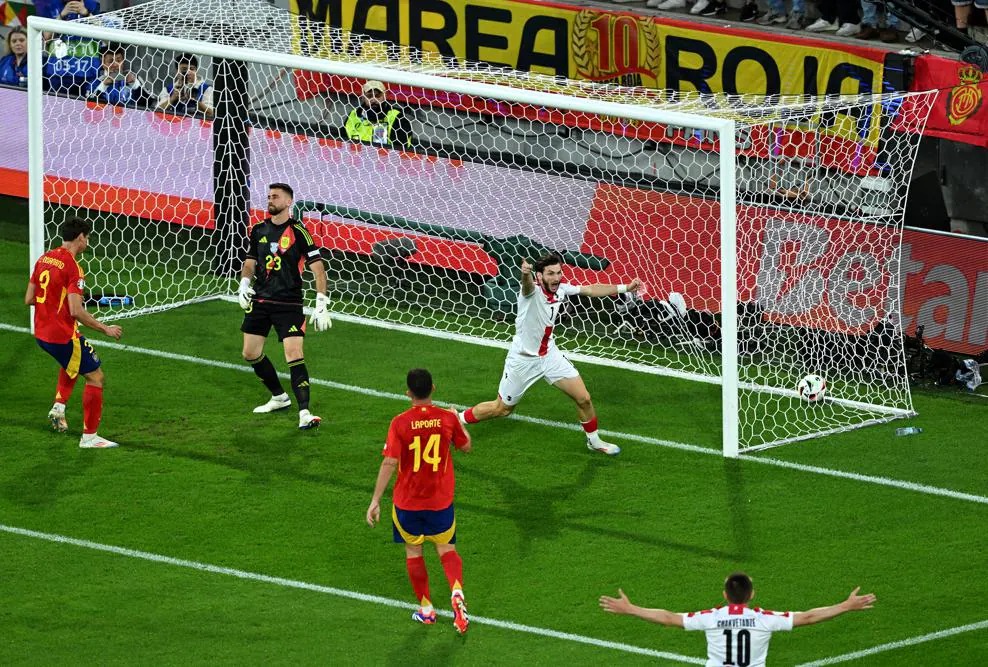
Here is something for the statistically minded. Euro 2024 has witnessed 100 goals so far, in 44 matches. Cody Gakpo (the Netherlands), Georges Mikautadze (Georgia), Jamal Musiala (Germany) and Ivan Schranz (Slovakia) are the joint top-scorers with three goals each. There are eight players who have found the target twice.
That makes own-goals the highest-scorer of the tournament so far. There have been nine of them, and this is two short of the record high of 11 seen in the 2020 edition, played in 2021 because of Covid-19. Seven more matches are still to be played in Germany this time. We might see a new record. So, two successive European football championships have witnessed a remarkable rise in the number of own-goals.
This is not an isolated occurrence. The 2018 World Cup saw 12 such incidents. Compare this figure with the total number of own-goals in the history of World Cups. In 22 editions, there have a total of 54 of them. That makes 12 in one competition a staggeringly high number. And then, the Euro has also seen this number rise to an unprecedented high since then.
What is the reason? Difficult to answer. Probably, there is not one single explanation. The increasing tendency of teams to crowd the penalty box can be one. Many teams, especially the so-called smaller ones, tend to defend with seven or eight players inside the box when under pressure. This means around six or seven players from the attacking side also inside the box. Now, if there are 15 players inside the 18-yard box, the probability of deflections will naturally be higher than a situation when there are 12 players inside the area. About 95 per cent of own-goals come off deflections.
Germany and Spain have been the form sides at Euro 2024, while France came in as pre-tournament favourites. Portugal look a complete side, but will starting Cristiano Ronaldo scupper their chances?
RevSportz Comment.@EURO2024 #EURO2024 https://t.co/lM8zEcM86g
— RevSportz Global (@RevSportzGlobal) July 5, 2024
A change in the rule and definition of own-goals introduced by FIFA a few years ago can also explain this spike. Earlier, the player taking an attempt on goal used to be credited for the goal even if it took a touch off a defender. The new rule has changed that. It specifies that when the ball has changed direction after touching a defender, it will count as an own-goal. This means that what was not an own-goal earlier is to be considered as one these days.
Modifications in the manufacturing technology of balls could also be a reason. Progressively, the ball weighing between 410-450 grams has started to travel faster through the air. It also deviates more when travelling, the wind factor adding to the unpredictability. That’s one reason why goalkeepers are seen palming it away more often than gripping it, which used to be the textbook guideline of goalkeeping. Now, if the ball behaviour is increasingly unpredictable, chances of a defender blocking it cleanly becomes less than partially blocking it. This is when deflections happen.
That international football teams and their players don’t get much time to practise together could be another factor. They are busy with club commitments and train as a part of their national teams only for a limited period of time. This means there is inadequate understanding between each other, which may cause lack of cohesion inside the box. They are not always as sure about their roles and positions as they are when playing for the clubs. This may also lead to this phenomenon of own-goals. In the 2018 World Cup, an Iranian striker had directed the ball into his own net while trying to clear it with a flying header. A striker doesn’t have to do that job if there is role clarity.
As Euro 2024 heads towards the business end and football fans get ready for some exciting action, this own-goal factor is also something that they will not be able to ignore. Why exactly is this happening, let the teachers of the game decipher. What is true in black and white cannot be changed. The major competitions have seen a major rise in arguably the most unfortunate occurrence on the football pitch.



